Taking the High Speed Train in Laos: What You Need to Know
Laos was not always the easiest place to get around, and 8-hour bus rides on painfully bumpy and winding roads were a quintessential Laos travel experience.

Though my eventful bus ride from Luang Prabang to Vang Vieng in 2018 ended up being a funny story I could tell my friends about (the bus broke down twice in the middle of nowhere, and we were left stranded for hours with no information in English about where we were and what was happening), it certainly wasn’t an experience that I was eager to repeat.

So, imagine the relief when I heard that the new Laos high speed rail section of the Laos-China Railway, or LCR, had officially opened at the end of 2021. On my latest trip back to Laos in early 2024 I was so excited to try out the fancy new 160 KM/hour trains and embarked on a journey from Vientiane to Vang Vieng, and again from Vang Vieng to Luang Prabang.

The Laos high speed rail essentially cuts down the travel time between these major Laos tourism destinations by hours, and makes traveling within Laos incredibly easy, comfortable and cost effective. Here is everything you need to know about taking the high speed train in Laos!
Laos China Railway: The Laos high speed train routes
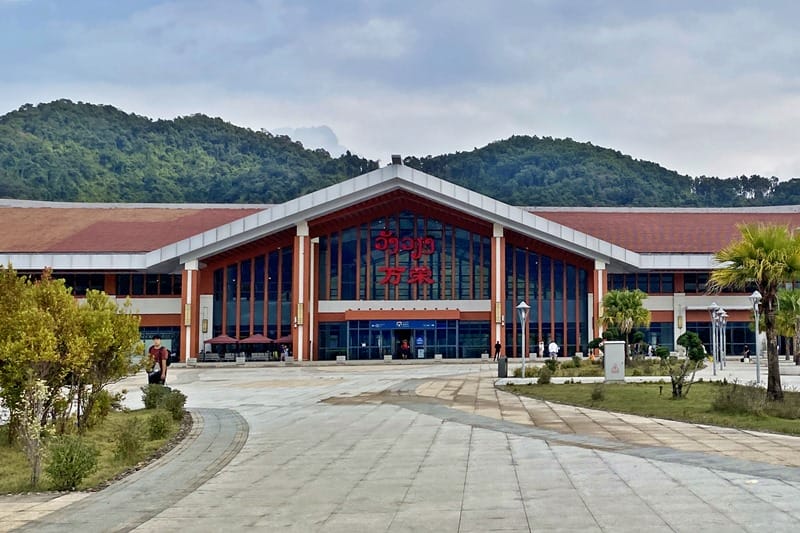
As of early 2024 there are currently 10 stations on the Laos-China Railway between Vientiane in Laos and Boten along the border with China. You can find the Laos high speed train map here.

The main passenger stations that tourists spending a week or two weeks in Laos will likely use are in Vientiane, Vang Vieng, Luang Prabang, Muang Xai station in Oudomxay and Na Teuy station in Luang Namtha.
As of March 2024, there are 4 daily “fast trains”, 1 international train that crosses the border into China and 1 standard “slow train”.
Laos high speed rail schedule
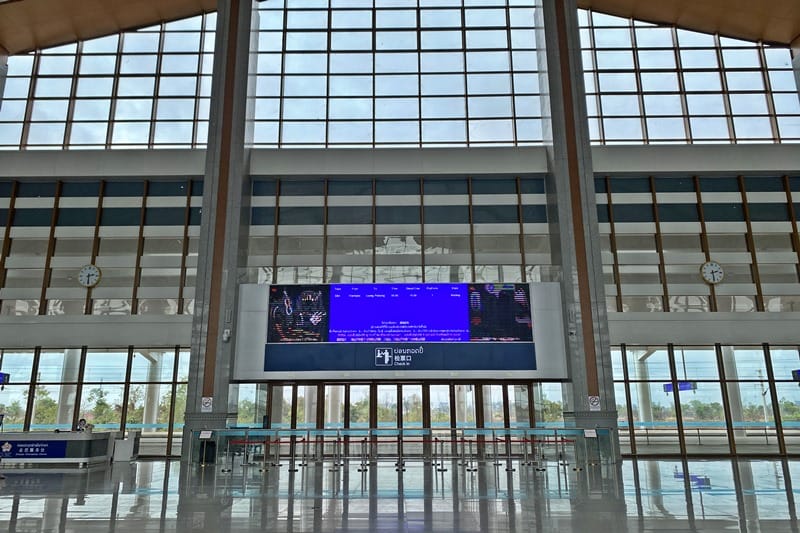
The schedule of the China Laos high speed train does change somewhat, so the most accurate way to check the timing of the Laos trains is to either visit the train station or official LCR ticket office in person, ask a local agent or check Hobomaps which is updated fairly regularly.
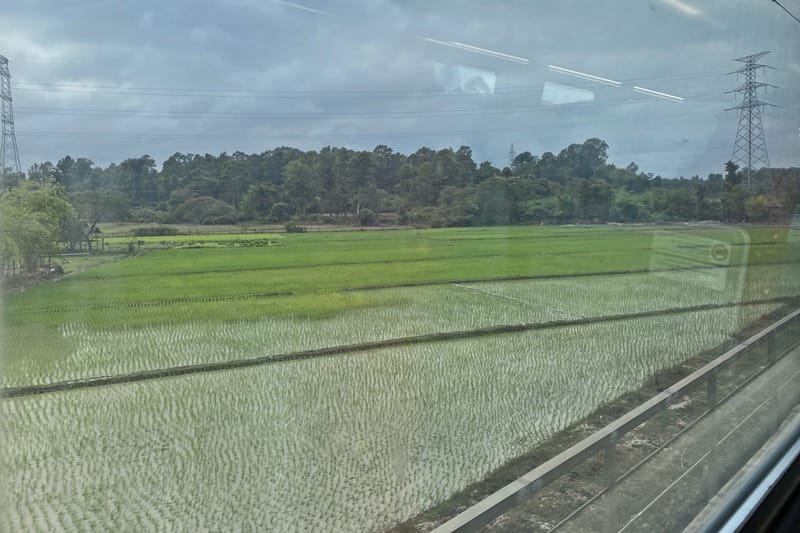
In general, there is usually a fast train leaving from Vientiane (stops in Vang Vieng and Luang Prabang) at 7:30 AM, 8:08 AM (international train), 10:45 AM, 1:05 PM and 3:55 PM. If you are venturing beyond Luang Prabang, it is important to note that not all the fast trains will stop in Oudomxay and Luang Namtha.
There is usually a fast train leaving from Luang Prabang to Vientiane at 10:15 AM, 1:20 PM, 2:49 PM (international train), 7:10 PM and 7:52 PM. Again the timing may vary slightly so it is always best to check the Laos-China Railway passenger train timetable. The fast trains start with a “C”, international trains that cross the border start with “D” and the ordinary slow train starts with a “K”.

The journey between Vientiane and Vang Vieng takes about 52 minutes and the journey between Vang Vieng and Luang Prabang takes about 50 minutes. The train stops for no more than 5-6 minutes at the platform to allow for people to embark and disembark.
How to buy Laos high speed train tickets

There are a handful of ways to buy high speed rail tickets in Laos. Tickets can be purchased 3 days before the departure date, and the Laos-China Railway Company updates ticket availability via their Facebook page. As the train is a very popular method of travel in Laos, I recommend booking as early as you can so that you secure your seat.
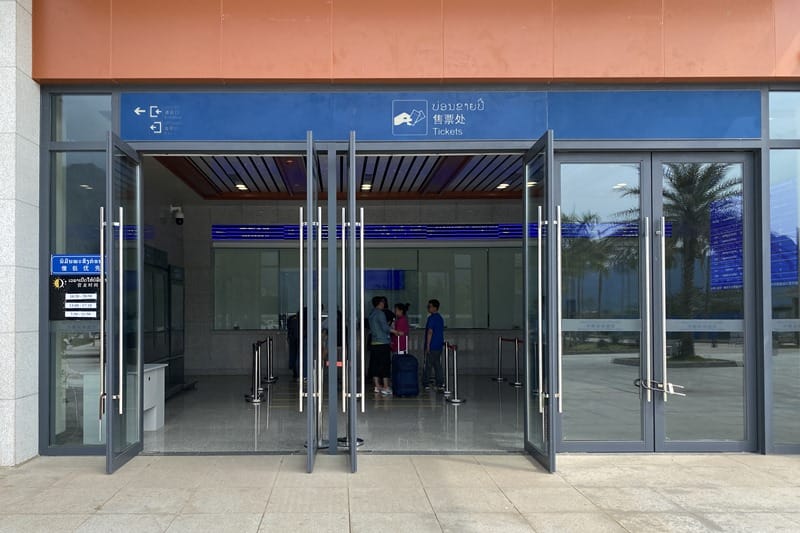
In person at the train station or at a LCR ticket office in Luang Prabang and Vientiane: You can go in person to buy your high speed rail ticket in person at one of the stations (usually some distance away from town) or from their ticketing outposts in Luang Prabang town and Vientiane Center. However, at the city ticket offices each person is limited to buying two tickets, a fee of 20,000 Kip is charged and they do not seem to accept credit card payments. You must show a copy of your passport at both the train station ticket office and at the city office.
Via the official LCR Ticket app: Download the app to purchase your LCR tickets, however you need a Laos SIM card/local phone number. A fee of 20,000 Kip is charged on top of the ticket fee. There is no official LCR ticket website as far as I know.
Ask an agent to book tickets on your behalf: I had a great experience with Discover Laos Today – you can use their website, Whatsapp them at +856 20 93 445 358 or pop into one of their offices in Vientiane, Luang Prabang or Vientiane. They will need a copy of your passport, and then they will send you a QR code to board the train – easy peasy. You can expect to pay approximately US$8-10 on top of the ticket price as an agency fee.
Ask your hotel to book tickets on your behalf: I’ve also found that it is often easier in Laos to just ask your hotel to organize transportation, tours and tickets.
Via 12go.asia: Alternatively, you can also purchase your Laos train tickets online via 12go.asia, however in certain cities like Vang Vieng you might need to pick up your tickets from a restaurant near the train station instead of receiving the ticket via QR code – double check the ticket delivery method.
You can check the official Laos-China Railway ticket prices here. To give you a sense of Laos high speed train prices, the train from Vientiane to Vang Vieng will cost 273,000 Kip (around US$13) in first class and 171,000 Kip (around US$8) in second class.
Onboard the Laos high speed train
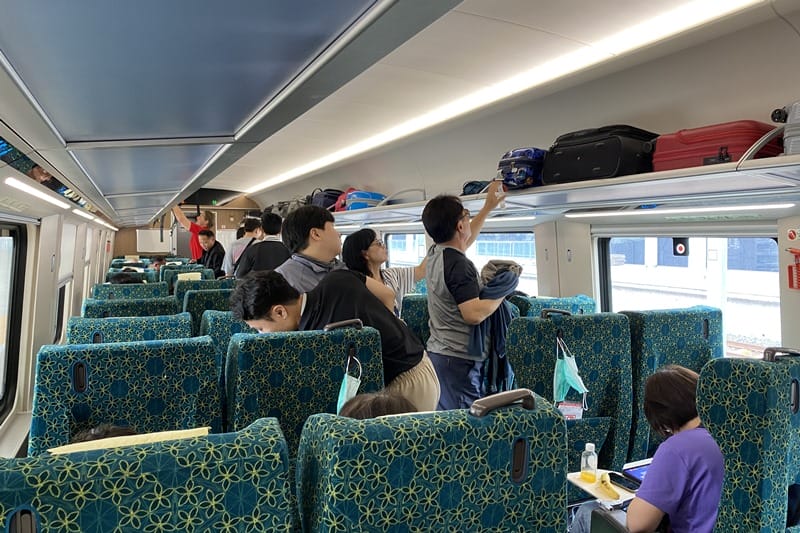
So, what is it like taking the high speed train in Laos? In short, it exceeded my expectations, especially seeing as I have personally experienced the alternative forms of transportation!
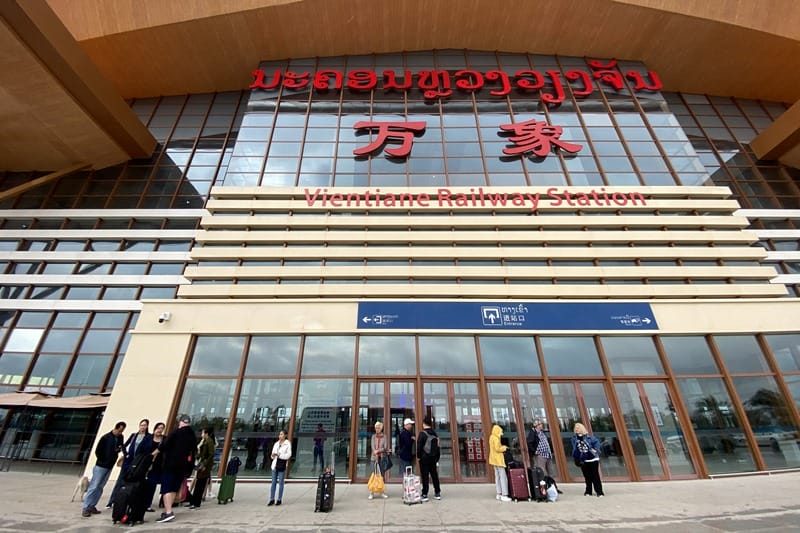
From the moment I arrived at the train station, I was blown away by the efficiency. The train stations in Vientiane, Vang Vieng and Luang Prabang all look similar on the outside, and on the inside it is perfectly clean and functional.

Your ticket is scanned and ID checked at the door, then you swiftly move onto the bag check portion.
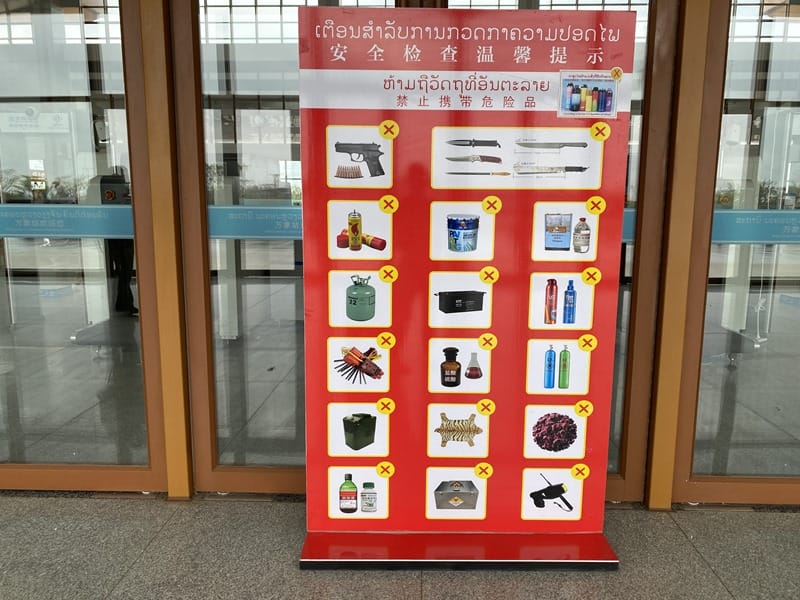
You won’t be able to bring any aerosols, pocket knives, e-cigarettes and other prohibited items on board – they are very strict. After your luggage and personal belongings are scanned through the X-ray system, you can take a seat in the station and check the monitor to see the train schedules.

There are a number of small convenience stores, water dispensers and bathrooms – a tip though, bring your own toilet paper as none is provided. As the “check in” process is short and sweet, you don’t really need to arrive more than 30-45 minutes ahead of your scheduled train departure time.

Once the gates open, people form orderly queues and the tickets are scanned once again before you make your way to your carriage – the carriage and seat numbers can be found on your ticket.
Usually, you board from the rear of the carriage – large suitcases have to be placed at the back of the train (not ideal as you can’t always keep your eye on it), but smaller hand-carry items can be placed on the rack above your seat.
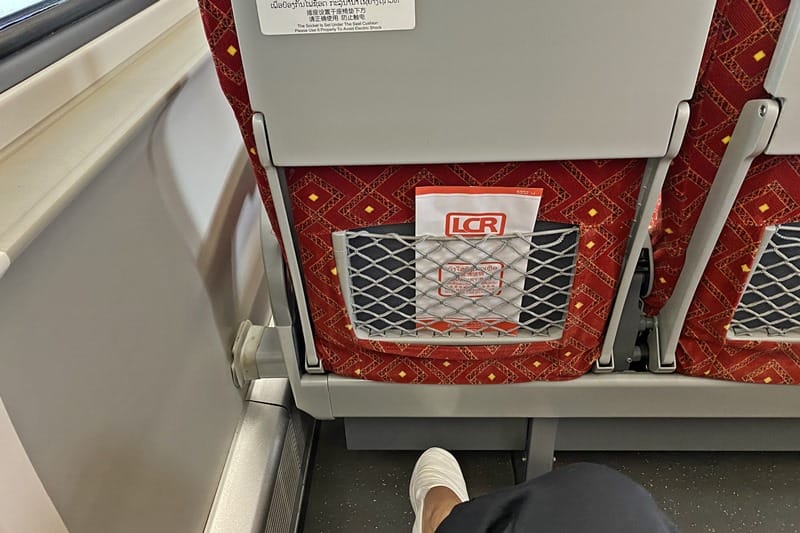
In my experience, the difference between first class and second class on the Laos high speed trains is minimal – especially if you are only on board for an hour or two. The configuration is 2:2 in first class and 3:2 in second class, and the seats are comfortable and clean with sufficient legroom.
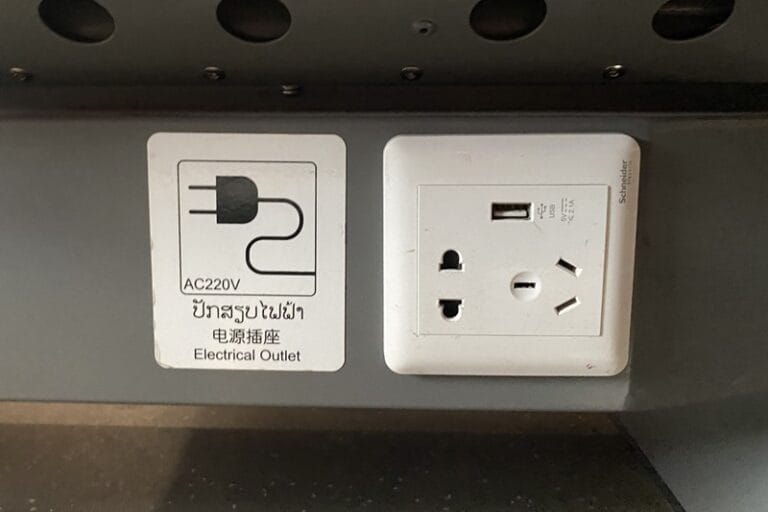
There are power outlets located under the seats, on-board toilets (mostly of the squat toilet kind) and snack trolleys that go by. The announcements are mostly in Mandarin, Lao and some English. Don’t expect much (or any) hospitality on board – the train staff were not exactly friendly or helpful.
To disembark, you are asked to move to the front of the carriage however I did find it easier to get off from the back of the train as I had my suitcase stored there.
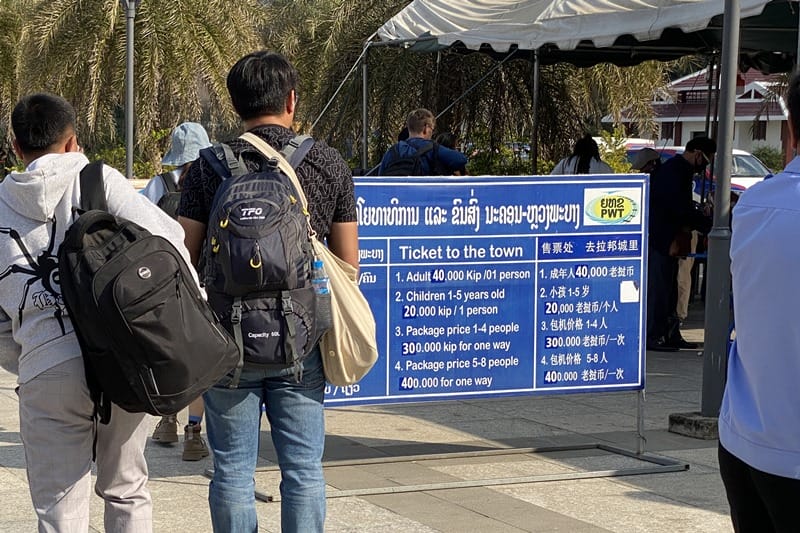
Once you arrive, hang onto your ticket as it is scanned again upon exiting the station. To travel from the train station to your next destination, keep an eye out for shared tuk tuk services that charge per person – usually 40-50,000 Kip. Alternatively, organize your train station pick up with your hotel.
Verdict on taking the high speed rail in Laos

Laos was hit hard by the lockdowns and its tourism industry suffered significantly over the past few years. The efficiency of the new Laos-China Railway is a gamechanger when it comes to making traveling around Laos easier and faster. The cost of traveling by high speed train in Laos is also very reasonable.

While you used to need a few weeks to travel around Laos due to the extensive travel times, it is now possible to spend 1 week in Laos or 2 weeks in Laos and cover a lot of ground; the “standard” Vientiane-Vang Vieng-Luang Prabang tourist trail can quite easily be done in just 7 days, or you can add on a few days to visit Oudomxay province or Luang Namtha.

It also makes it possible for a broader demographic of travelers to traverse Laos – I would never have considered taking my toddler or nearly 70-year old mum on a 6 to 8-hour bus ride, but with the new train system I would very happily hop aboard with them on the Laos high speed trains!
You should also know that there is also a new expressway between Vientiane and Vang Vieng which cuts down the drive time from 3 hours to just over 1 hour – if you are traveling with lots of luggage or with a group of people you may want to consider getting a private car to take you door-to-door instead of traveling by train.

I hope this encourages you to travel to Laos and experience this amazing country in Southeast Asia – I have visited thrice (so far) and am already planning my next trip back!
Pin this for later!
You might also enjoy these reads:
- If you are planning to spend a few days in Vientiane during your time in Laos, check out my guide on what to see and do in Vientiane here
- Luang Prabang is a UNESCO-listed heritage town in northern Laos. Here is my guide to the top things to do in Luang Prabang and what you might want to give a miss
- Vang Vieng is a haven for adventure lovers – it’s also one of the best places to try hot air ballooning in the world. Here is my guide to exploring Vang Vieng and tips on which Vang Vieng blue lagoon to visit
- Looking for more Southeast Asia travel tips? Click here for 10 things you should know before you visit Southeast Asia
- Here are all of my Laos travel guides and tips
Pin this for later!
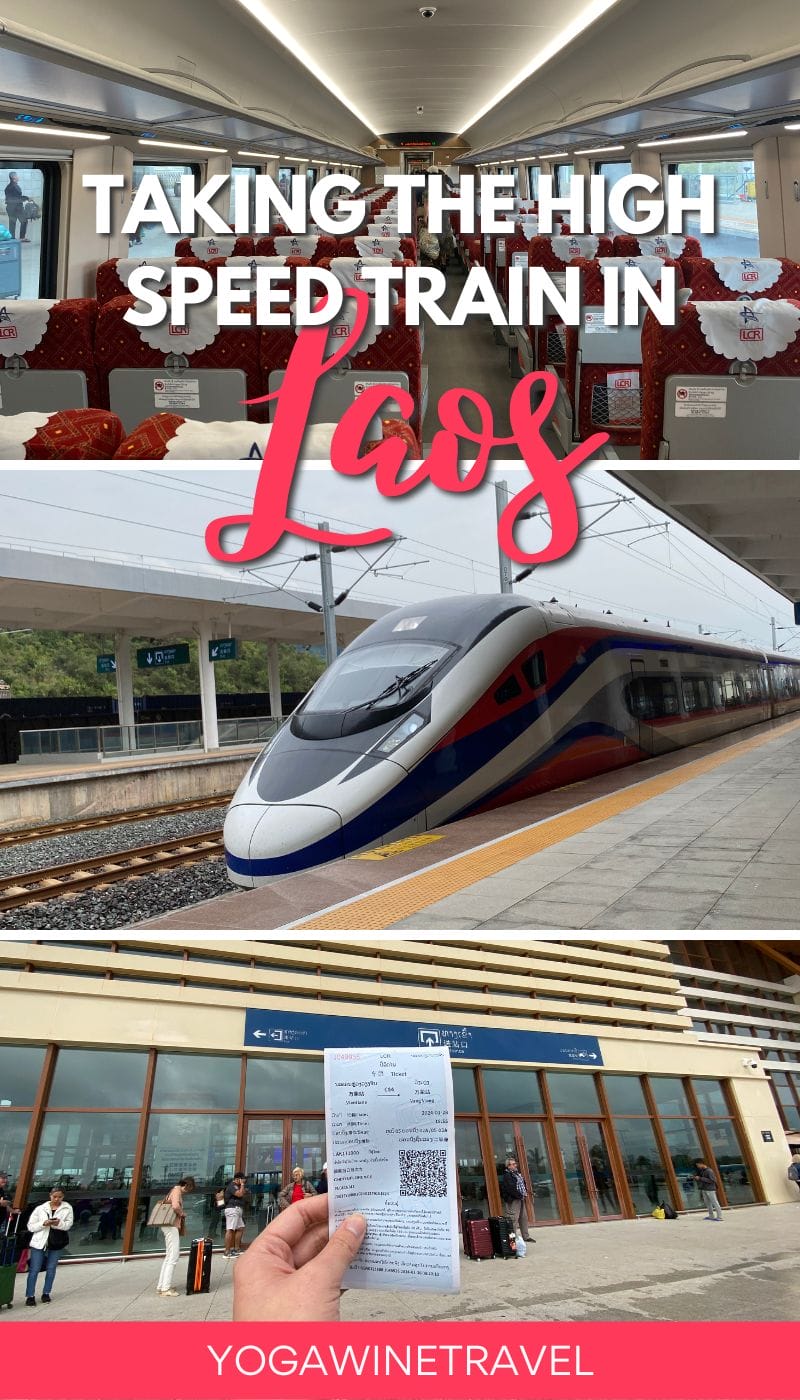

I was hosted by Tourism Laos and ASEAN to participate in the ASEAN Tourism Forum in Vientiane. However, no compensation was received for this article, and as always, the opinions on Yogawinetravel.com are (and always will be) my own!
This post contains affiliate links. If you choose to book using these links, I will earn a small commission at no extra cost to you. Thank you for supporting my website by using these links.
Enjoyed reading this article? Subscribe to the mailing list!
* Unsubscribe at any time. Your e-mail address will only ever be used to send the occasional Yoga, Wine & Travel newsletter.








